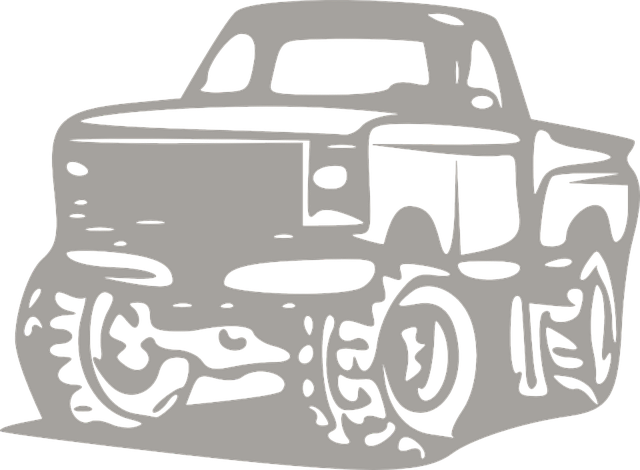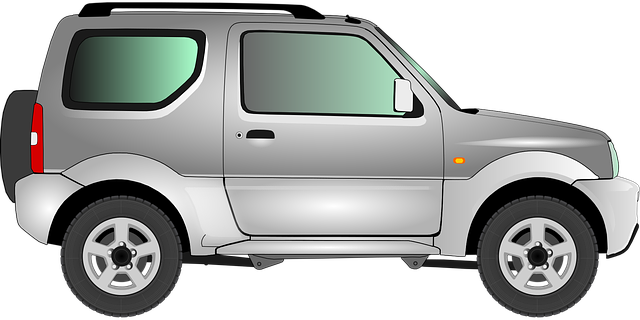Recovery lines in off-road vehicles, particularly 4x4s with RGV (Resilience, Response, Flexibility, and Continuity) systems, are crucial for safety and reliability. Building robust recovery lines emphasizes resilience through quick issue identification, response systems minimizing downtime, flexibility to adapt strategies, and continuity planning as a safety net. Effective communication fosters trust within the 4×4-parts-RGV framework, encouraging patients to share experiences openly for collaboration and ownership of their healing journey. Empathy is vital for understanding individuals' needs and tailoring support. Problem-solving in vehicle recovery involves objective situation assessment, specialized knowledge, and access to suitable parts, with adaptability being key. The final phase focuses on implementing positive change through structured action plans, regular reviews, and alignment with personal growth goals.
In today’s complex landscape, effective recovery lines are vital for fostering resilience and restoration. This comprehensive guide breaks down the concept and its four key components, specifically addressing communication, empathy, problem-solving, and action planning—a 4×4-parts-RGV approach.
Understanding recovery lines and implementing these strategies can transform lives and communities, offering a path towards positive change and a brighter future.
- Understanding Recovery Lines: Definition and Purpose
- The 4 Key Components of Effective Recovery Lines
- Part 1: Communication – Building Trust and Transparency
- Part 2: Empathy – Walking in Their Shoes
- Part 3: Problem-Solving – Strategies for Real Solutions
- Part 4: Action Plan – Implementing Positive Change
Understanding Recovery Lines: Definition and Purpose

Recovery lines, a key concept in the automotive world, particularly for off-road enthusiasts, are designed to enhance vehicle performance and durability during challenging terrain navigation. These specialized lines, often overlooked but immensely valuable, play a pivotal role in the overall efficiency of 4×4 vehicles, especially those equipped with RGV (4×4) systems.
The primary purpose of recovery lines is twofold: first, they provide an efficient route for fluid transfer, ensuring optimal performance and quick response times in demanding off-road conditions. Second, these lines offer a backup solution when the primary systems fail or become compromised, allowing drivers to navigate back to safety or service stations for repairs. In the context of 4×4 vehicles, where reliability is paramount, recovery lines serve as a reliable safety net, making them an essential component, especially for those tackling rugged landscapes with their RGVs.
The 4 Key Components of Effective Recovery Lines

In the quest for efficient and effective recovery lines, understanding and implementing the 4 key components is paramount. The first crucial element is resilience, the ability to withstand and recover from difficult situations. This involves strong communication channels that facilitate quick issue identification and resolution. A robust response system is the second vital part, ensuring that when challenges arise, they are met with swift and calculated actions, minimizing downtime.
The third component revolves around flexibility, enabling recovery lines to adapt to ever-changing circumstances. This adaptability ensures that strategies can be modified on the fly, leveraging lessons learned from past experiences. Lastly, continuity planning acts as a safety net, detailing step-by-step procedures for smooth operations during crises. When integrated seamlessly, these 4×4 parts (resilience, response, flexibility, and continuity) form an indomitable RGV—a framework designed to navigate and overcome any obstacle in the path of successful recovery lines.
Part 1: Communication – Building Trust and Transparency

In the context of recovery, effective communication serves as a cornerstone for fostering trust and transparency between patients, healthcare providers, and support systems—key components of the 4×4-parts-RGV (Recovery, Growth, Support, and Trust) framework. Open dialogue encourages individuals to share their experiences, fears, and hopes without fear of judgment, creating a safe space essential for emotional processing and healing. This trust is pivotal in encouraging vulnerability, allowing patients to express their struggles more openly.
Through active listening and empathetic responses, recovery teams can build upon this foundation of trust. Such an approach ensures that every conversation becomes a learning opportunity, where individuals feel heard and understood. Consequently, it promotes a collaborative environment, empowering patients to take ownership of their healing journey while receiving the necessary guidance and support along the way.
Part 2: Empathy – Walking in Their Shoes

In the context of recovery lines, empathy plays a pivotal role in understanding and supporting individuals navigating challenging situations. Walking in their shoes involves truly comprehending their experiences, struggles, and emotions. This profound connection fosters a sense of belonging and trust, which are essential for effective communication and rebuilding shattered confidence. By adopting this perspective, we can tailor our approach to meet individual needs, whether it’s offering moral support or providing practical assistance with 4×4 parts RGV (a specialized vehicle part).
Empathy also helps dispel misconceptions and promote a culture of care. Recognizing that everyone has unique strengths and weaknesses allows us to avoid judgmental attitudes. This understanding encourages open dialogue, making it easier for individuals to share their stories and seek help without fear of stigma or rejection. Ultimately, empathy strengthens the recovery process, ensuring that support is not just surface-level but deeply meaningful and impactful in addressing complex needs.
Part 3: Problem-Solving – Strategies for Real Solutions

In the realm of vehicle recovery, where every second counts, implementing effective problem-solving strategies is akin to having a 4×4-parts-rgs (a robust and versatile toolset) at your disposal. When faced with a stuck or damaged vehicle, the first step is to assess the situation objectively. Identify the root cause—is it mechanical failure, poor terrain, or a combination of both? This critical analysis guides the next steps, ensuring that any solution applied addresses the core issue.
For instance, if the problem stems from a broken part, knowing your 4×4’s repair manual and having access to replacement 4×4 parts RGV (readily available and high-quality) can expedite recovery efforts. Conversely, in challenging terrain, utilizing specialized recovery equipment and employing techniques suited for that specific environment may be necessary. The key is adaptability—a strategic approach that combines a deep understanding of the problem with readily accessible, effective solutions, mirroring the versatility of your 4×4’s 4×4 parts RGV.
Part 4: Action Plan – Implementing Positive Change

In Part 4 of our series on recovery lines, we focus on the crucial step of implementing positive change. Once you’ve identified areas for improvement through a thorough analysis of your 4×4-parts-rgv (recovery, growth, resilience, and transformation), it’s time to translate insights into action. This involves setting clear goals, developing strategies aligned with your unique needs, and fostering an environment that supports continuous progress.
A structured action plan is essential for lasting change. Break down your objectives into manageable tasks, assign responsibilities, and establish measurable milestones. Regularly review and adjust your plan as you navigate the complexities of recovery, ensuring every step aligns with your overarching vision of personal growth and well-being.
In conclusion, mastering recovery lines through a comprehensive 4×4-parts-RGV approach is key to fostering genuine connections and driving positive change. By combining open communication, empathetic understanding, practical problem-solving strategies, and actionable plans, individuals and organizations can create supportive environments that encourage resilience and growth. Embracing these four pillars empowers us to navigate challenges effectively and build stronger, more resilient communities.



